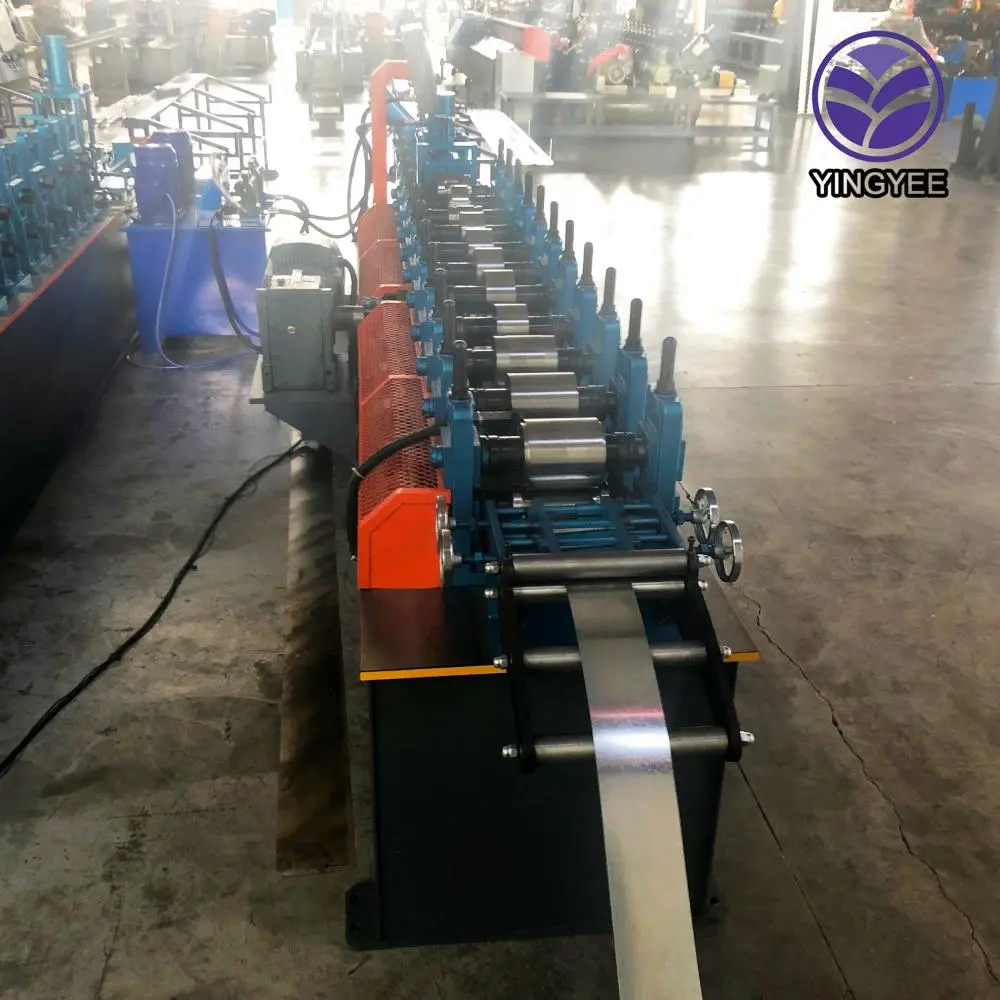
Guard Rail Cold Roll Forming Machine An Overview
In modern infrastructure development, the safety and security of road users have become paramount. Among the various safety features incorporated into roadways, guard rails play a crucial role in preventing vehicles from veering off course and protecting both drivers and pedestrians. The efficiency and effectiveness of guard rails can be significantly enhanced through the use of advanced manufacturing techniques, particularly with the aid of cold roll forming machines.
A guard rail cold roll forming machine is specifically designed to create the necessary components for highway guard rails, which are typically made from high-strength steel. The cold roll forming process involves feeding steel strips through a series of rollers, gradually shaping them into the desired profile without the application of heat. This method is highly efficient, producing components at a rapid pace while maintaining rigorous quality standards.
How Cold Roll Forming Works
The cold roll forming process begins with high-quality steel strips, which are cut to the appropriate width. These strips are then subjected to a series of rollers that progressively bend them into the required shape. The rollers operate in a precise sequence to ensure that the final product meets the exact specifications, which can vary based on regional standards or specific customer requirements.
One of the key advantages of cold roll forming is its ability to produce complex shapes with high dimensional accuracy. The process allows for various guard rail designs, including W-beams and thrie beams, which can be tailored to specific safety standards or aesthetic preferences. The durability of guard rails formed through this technique is enhanced by the cold working of the steel, which increases its yield strength and overall resistance to impacts.
Benefits of Using Guard Rail Cold Roll Forming Machines
1. High Production Efficiency Cold roll forming machines can operate at high speeds, enabling the mass production of guard rails. This efficiency is crucial, especially for large-scale infrastructure projects that require significant quantities of guard rail components.
2. Cost-Effectiveness With reduced material wastage due to the precision cutting and forming processes, manufacturers can achieve lower production costs. Furthermore, the long lifespan of guard rails produced through cold roll forming translates to lower replacement and maintenance expenses over time.

3. Customization Options The flexibility of cold roll forming technology allows manufacturers to create customized guard rail designs tailored to specific project requirements. This responsiveness to client needs can give manufacturers a competitive edge in the market.
4. Strength and Durability Cold roll-formed guard rails exhibit high strength and durability, making them capable of withstanding severe collisions. The process enhances the tensile strength of the material, ensuring that the guard rails will perform effectively in safeguarding road users.
5. Reduced Lead Times As the setup for cold roll forming machines is relatively quick compared to other manufacturing processes, manufacturers can reduce lead times significantly. This helps to meet tight project schedules without compromising on quality.
Future Trends in Guard Rail Manufacturing
As technology progresses, the guard rail cold roll forming industry is also evolving. The integration of automation and robotics in the manufacturing process stands to further enhance efficiency and reduce labor costs. Additionally, advancements in materials science may lead to the development of even higher strength alloys, further improving the performance of guard rails.
Moreover, there is a growing emphasis on sustainability within the manufacturing sector. The use of recycled materials for producing guard rails, coupled with energy-efficient processes, could significantly reduce the environmental impact of production. As regulations around sustainability tighten, manufacturers who adopt such practices may find themselves better positioned for future success.
Conclusion
In summary, guard rail cold roll forming machines play an integral role in the production of vital highway safety features. With their ability to produce high-quality, durable components efficiently, they not only enhance road safety but also contribute to cost-effective manufacturing practices. As technology continues to advance, the future of guard rail production looks promising, with opportunities for increased customization, sustainability, and efficiency paving the way for safer roadways worldwide.